Arti Ramesh
RelEx: A Model-Agnostic Relational Model Explainer
May 30, 2020


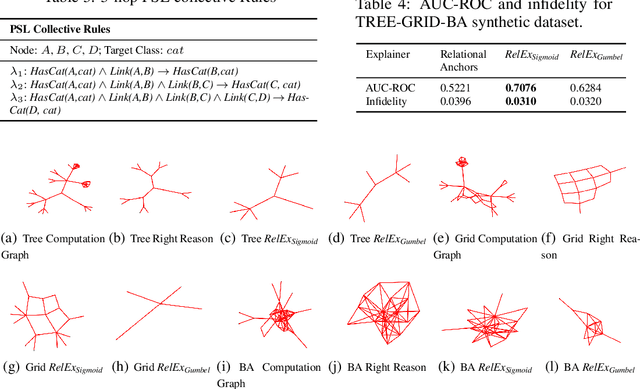
Abstract:In recent years, considerable progress has been made on improving the interpretability of machine learning models. This is essential, as complex deep learning models with millions of parameters produce state of the art results, but it can be nearly impossible to explain their predictions. While various explainability techniques have achieved impressive results, nearly all of them assume each data instance to be independent and identically distributed (iid). This excludes relational models, such as Statistical Relational Learning (SRL), and the recently popular Graph Neural Networks (GNNs), resulting in few options to explain them. While there does exist one work on explaining GNNs, GNN-Explainer, they assume access to the gradients of the model to learn explanations, which is restrictive in terms of its applicability across non-differentiable relational models and practicality. In this work, we develop RelEx, a model-agnostic relational explainer to explain black-box relational models with only access to the outputs of the black-box. RelEx is able to explain any relational model, including SRL models and GNNs. We compare RelEx to the state-of-the-art relational explainer, GNN-Explainer, and relational extensions of iid explanation models and show that RelEx achieves comparable or better performance, while remaining model-agnostic.
Struct-MMSB: Mixed Membership Stochastic Blockmodels with Interpretable Structured Priors
Feb 21, 2020
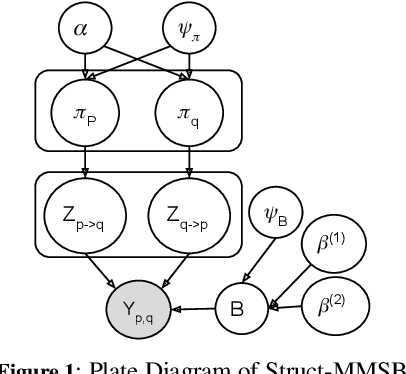
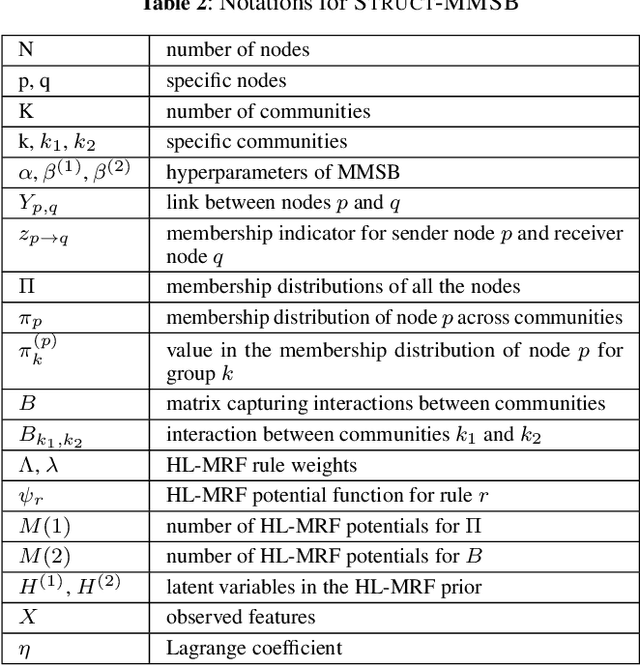
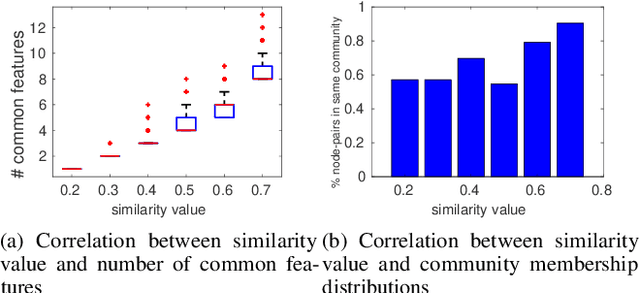
Abstract:The mixed membership stochastic blockmodel (MMSB) is a popular framework for community detection and network generation. It learns a low-rank mixed membership representation for each node across communities by exploiting the underlying graph structure. MMSB assumes that the membership distributions of the nodes are independently drawn from a Dirichlet distribution, which limits its capability to model highly correlated graph structures that exist in real-world networks. In this paper, we present a flexible richly structured MMSB model, \textit{Struct-MMSB}, that uses a recently developed statistical relational learning model, hinge-loss Markov random fields (HL-MRFs), as a structured prior to model complex dependencies among node attributes, multi-relational links, and their relationship with mixed-membership distributions. Our model is specified using a probabilistic programming templating language that uses weighted first-order logic rules, which enhances the model's interpretability. Further, our model is capable of learning latent characteristics in real-world networks via meaningful latent variables encoded as a complex combination of observed features and membership distributions. We present an expectation-maximization based inference algorithm that learns latent variables and parameters iteratively, a scalable stochastic variation of the inference algorithm, and a method to learn the weights of HL-MRF structured priors. We evaluate our model on six datasets across three different types of networks and corresponding modeling scenarios and demonstrate that our models are able to achieve an improvement of 15\% on average in test log-likelihood and faster convergence when compared to state-of-the-art network models.
Learning Fairness-aware Relational Structures
Feb 21, 2020
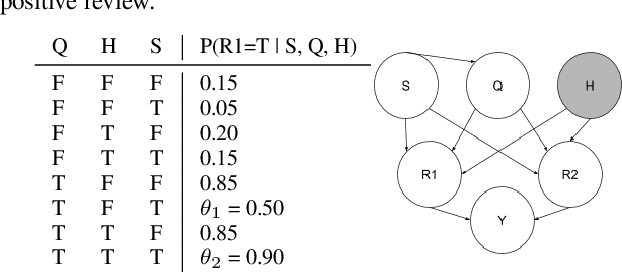
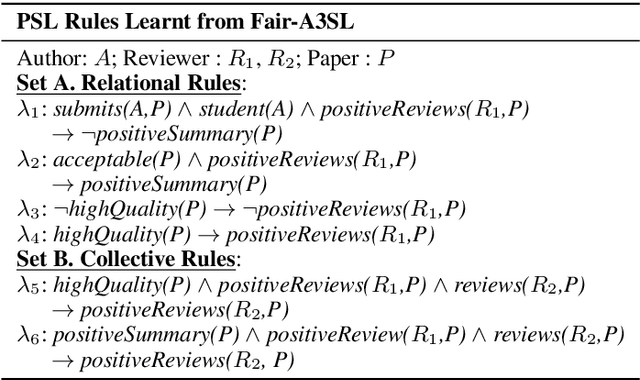

Abstract:The development of fair machine learning models that effectively avert bias and discrimination is an important problem that has garnered attention in recent years. The necessity of encoding complex relational dependencies among the features and variables for competent predictions require the development of fair, yet expressive relational models. In this work, we introduce Fair-A3SL, a fairness-aware structure learning algorithm for learning relational structures, which incorporates fairness measures while learning relational graphical model structures. Our approach is versatile in being able to encode a wide range of fairness metrics such as statistical parity difference, overestimation, equalized odds, and equal opportunity, including recently proposed relational fairness measures. While existing approaches employ the fairness measures on pre-determined model structures post prediction, Fair-A3SL directly learns the structure while optimizing for the fairness measures and hence is able to remove any structural bias in the model. We demonstrate the effectiveness of our learned model structures when compared with the state-of-the-art fairness models quantitatively and qualitatively on datasets representing three different modeling scenarios: i) a relational dataset, ii) a recidivism prediction dataset widely used in studying discrimination, and iii) a recommender systems dataset. Our results show that Fair-A3SL can learn fair, yet interpretable and expressive structures capable of making accurate predictions.
Adversarial Model Extraction on Graph Neural Networks
Dec 16, 2019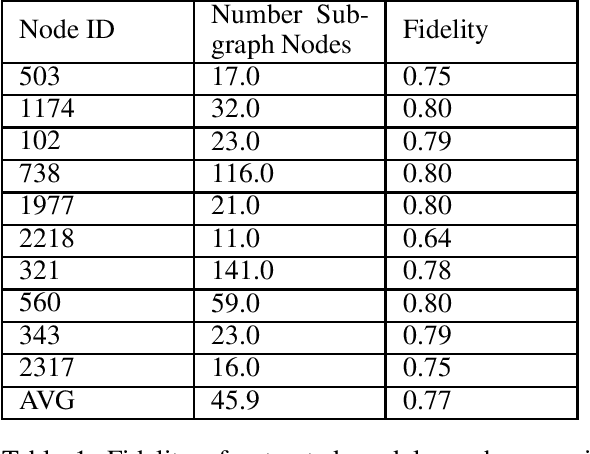
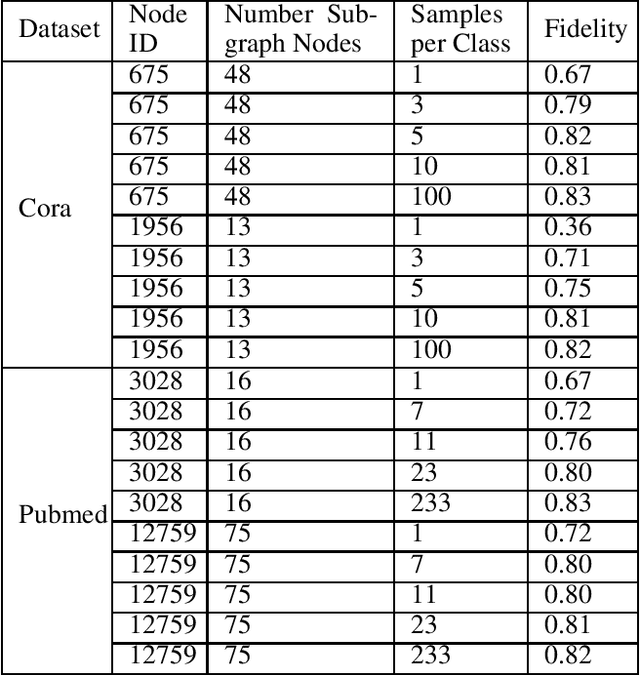
Abstract:Along with the advent of deep neural networks came various methods of exploitation, such as fooling the classifier or contaminating its training data. Another such attack is known as model extraction, where provided API access to some black box neural network, the adversary extracts the underlying model. This is done by querying the model in such a way that the underlying neural network provides enough information to the adversary to be reconstructed. While several works have achieved impressive results with neural network extraction in the propositional domain, this problem has not yet been considered over the relational domain, where data samples are no longer considered to be independent and identically distributed (iid). Graph Neural Networks (GNNs) are a popular deep learning framework to perform machine learning tasks over relational data. In this work, we formalize an instance of GNN extraction, present a solution with preliminary results, and discuss our assumptions and future directions.
 Add to Chrome
Add to Chrome Add to Firefox
Add to Firefox Add to Edge
Add to Edge